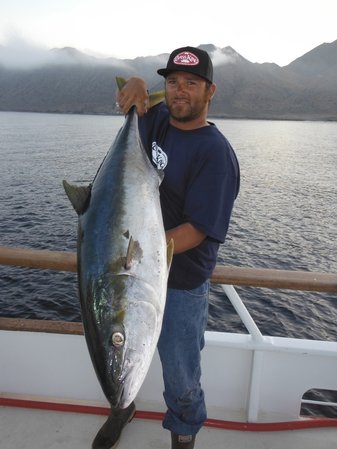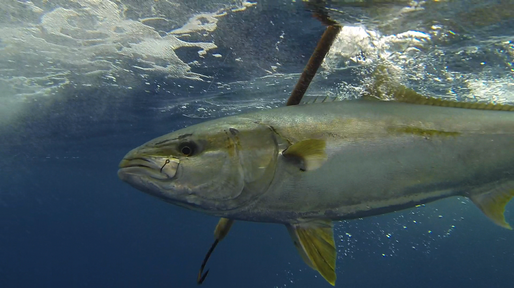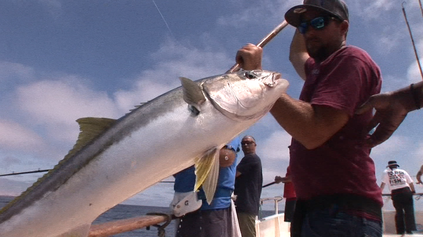Yellowtail
Description: The body of the yellowtail is elongate, somewhat compressed, tapering to the sharp snout and the slender tail. The head is more or less conical. The color is olive brown to brown above, with a dark streak along the side of the body. The fins are yellowish. Yellowtail are easily distinguished from other fishes by the darker horizontal stripe along the side of the body, as well as a deeply forked yellow tail.
|
Range: Yellowtail occur from Chile to British Columbia, Canada, including the Gulf of California, and from the ocean's surface to depths of 228 feet. Most fish landed in California are taken between Point Conception and the Coronado Islands, Baja California.
Natural History: Yellowtail feed primarily during the day and are opportunistic feeders, eating anything that is abundant in the area. Red crabs, anchovies, squid, and most small fishes are food items. Spawning occurs from June through October. Many yellowtail are sexually mature in 2 years; all will spawn when 3 years old. A 3 year old female will weigh about 10 pounds and spawn approximately 450,000 eggs; however, a 25 pound female will produce more than 1 million eggs.
|

Fishing Information: Prime yellowtail areas are found around the Coronado Islands, La Jolla Kelp, the area between Oceanside and Dana Point, Horseshoe Kelp, Palos Verdes Peninsula, Santa Catalina Island and San Clemente Island. Most yellowtail taken by California anglers are landed on boats which anchor at spots where yellowtail are known to aggregate and then chum the fish to the boat with live anchovies. As the fish mill about the boat, anglers then use anchovies, mackerel or squid to catch them. Small boaters may take yellowtail by trolling jigs or feathers in areas where these fish occur.
Other Common Names: California yellowtail, forktail, mossback, amberjack, white salmon.


